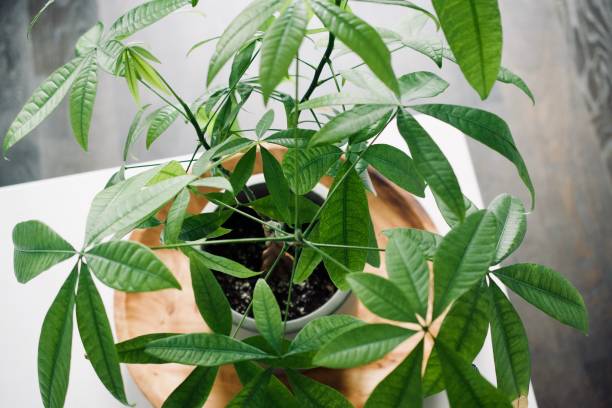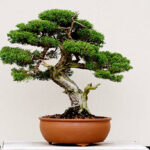
Bring Prosperity and Luck to Your Home with Expert Money Tree Care
Welcome to our comprehensive guide on money tree care, where we will provide valuable insights and tips to ensure the optimal growth and well-being of your money tree (pachira aquatica). Money trees are remarkable indoor plants associated with good fortune, wealth, and prosperity. Their beautiful braided trunks and vibrant green leaves make them a perfect addition to any home decor. This guide will cover essential aspects such as sunlight requirements, soil composition, watering techniques, temperature considerations, pruning methods, and common problems to avoid. Let’s dive in and unlock the secrets to nurturing a thriving money tree.
Understanding the Money Tree
Before delving into the intricacies of money tree care, let’s explore some fascinating facts about this tropical wetland tree. Native to Central and South America, the money tree can grow up to an impressive height of six to eight feet when cultivated indoors. It can even reach a towering height of over 60 feet in its natural habitat. Surprisingly, the distinctive braided trunk commonly seen in money trees is not genuine. Instead, it results from intertwining multiple plants during their growth process.
According to the principles of Feng Shui, the money tree is considered one of the best plants for promoting positive energy. Its five shiny green leaves symbolize the five essential elements of balance: earth, fire, water, wind, and metal. While some stems may bear six leaves, those with seven leaves are believed to bring extra luck and abundance to your home. Let’s now explore the key factors that contribute to the well-being of your money tree.
Sunlight: The Right Balance

Providing your money tree with adequate sunlight is crucial for its overall health and growth. Bright, indirect sunlight is considered ideal for this plant. You can easily find the perfect spot in your home, such as a living room with a plant stand or a home office floor. It is important to ensure that the selected area does not receive excessive direct sunlight, as this can lead to leaf scorching. Although money trees can adapt to lower light conditions, it is important to strike the right balance. Insufficient light may hinder growth and cause the leaves to turn yellow.
Soil Composition: Nourishing the Roots
Choosing the suitable soil composition is essential for providing the optimal growth environment for your money tree. When it comes to money plant care, using a well-draining potting mix is highly recommended. A mixture that includes sand, pebbles, or perlite can ensure proper drainage, preventing waterlogged conditions that can lead to root rot. Alternatively, you can opt for potting soil formulated explicitly for money trees. Remember to repot your money tree every two to three years, preferably during the spring season, to provide ample space for root development.
Watering: The Art of Balance

Watering your money tree correctly is crucial to prevent common mistakes that can negatively impact its health. Overwatering is a primary concern, so it’s important to establish a consistent watering schedule. As a general guideline, water your money tree once every one to two weeks, depending on the dryness of the soil. Aim to water when the soil volume is approximately 50 to 75% dry, avoiding extremes of saturation or complete dryness. Your money tree may require more frequent watering during the spring and summer months. To maintain proper drainage, ensure that your planter has adequate drainage holes to prevent the roots from sitting in excess water.
Temperature: Creating an Optimal Climate
Creating the right climate for your money tree is crucial for its growth and vitality. Ideally, maintain a temperature range between 60 and 75 degrees Fahrenheit (15-24 degrees Celsius). Avoid placing your money tree near heat sources, air conditioning vents, drafty windows, or doors, as these conditions can cause stress and hinder development. You can create the perfect conditions for your money tree to thrive by providing a stable temperature environment.
Pruning: Shaping for Optimal Growth
Pruning plays a vital role in maintaining the size and shape of your money tree. If your plant starts to outgrow its designated space, you can trim the leaves to control its height and width. Trimming brown or wilted leaves enhances its aesthetic appeal and promotes healthy growth. Pruning can be done using clean, sharp pruning shears, ensuring to make clean cuts without causing unnecessary damage to the plant.
Repotting: Promoting Healthy Roots

Repotting your money tree at the right time and in the right manner is crucial for its long-term health. The ideal time for repotting is during spring, providing your money tree with fresh nutrients and adequate space for root expansion.
Select a pot with proper drainage and choose a size slightly larger than the current one. If you prefer to keep the same planter, you can carefully trim some root growth (not exceeding 25% of the roots) and replace the soil with a well-draining potting mix suitable for money trees. This process ensures that your money tree receives the necessary nutrients and space to thrive.
Common Problems to Avoid
To ensure your money tree’s longevity and vitality, it is essential to be aware of common problems and take preventive measures. Here are a few issues you should watch out for:
- Yellow Leaves: Yellowing leaves may indicate overwatering or excessive sunlight exposure. Maintain a consistent watering schedule and adjust the light conditions accordingly to rectify the issue.
- Leaf Drop: Excessive or insufficient watering, temperature fluctuations, excessive sunlight, or insect infestations can cause leaf drop. Ensure you water your plant on schedule, provide stable temperature conditions, and promptly address insect infestations.
- Root Rot: Overwatering is a leading cause of root rot. Watch for droopy leaves, a soft, slimy trunk, or unpleasant smells. If root rot is detected, repot your plant immediately to prevent further damage.
- Insect Infestation: Money trees are susceptible to aphids, spider mites, and mealybugs. If you notice an insect infestation often accompanied by yellow leaves, use a mild insecticidal soap mixed with warm water to eliminate the pests and prevent further damage.
With proper care and attention, your money tree will reward you with its lush foliage and positive energy, bringing luck and prosperity to your home. Remember to observe your plant closely, adjusting care techniques as needed to create an optimal environment for its growth.
Conclusion
In conclusion, nurturing a money tree involves providing the right balance of sunlight, a well-draining soil mixture, proper watering techniques, suitable temperature conditions, periodic pruning, and vigilant pest control.
By following the comprehensive guidelines outlined in this article, you can ensure your money tree’s optimal growth and well-being. Remember, the key to success lies in maintaining a harmonious environment that fosters the prosperity and positive energy associated with this remarkable plant. Happy money tree care!






